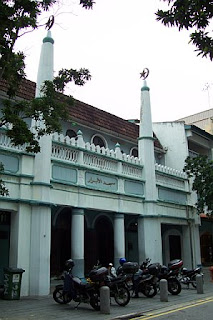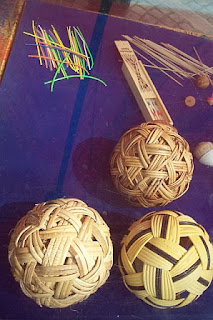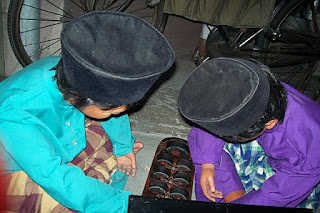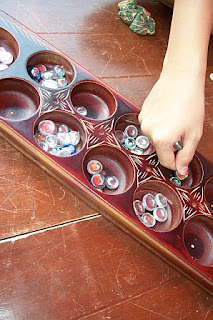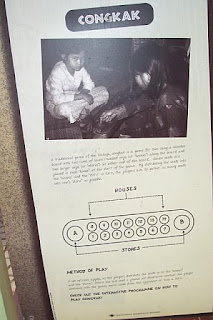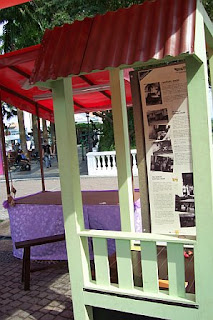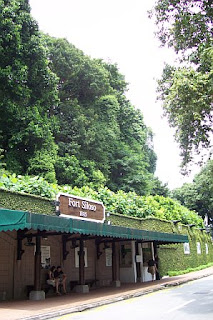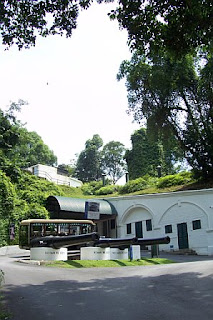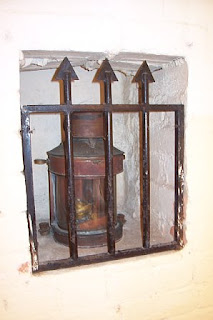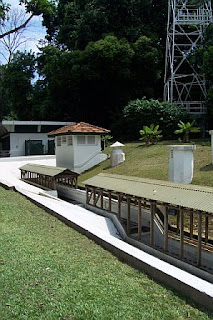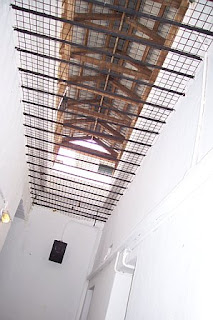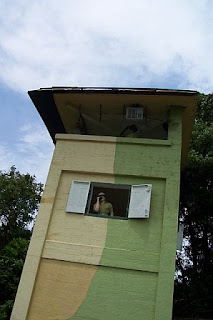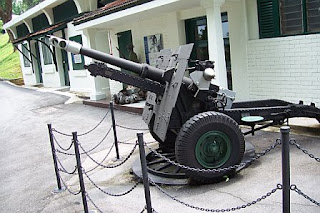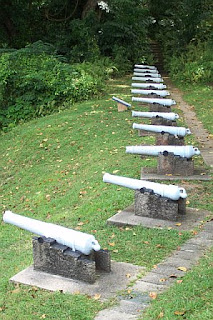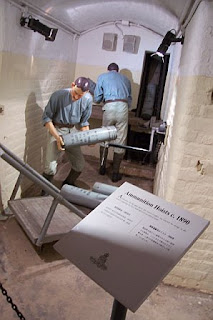If you have only one day to go for a tour and you are wondering where to go, instead of looking at options overseas, why not look within and tour a part of Singapore?
If the thought of understanding more about Singapore's comparatively short yet fairly rich history interests you, I shall be biased and recommend that you check out any one of The Original Singapore Walk offered by Journeys Pte Ltd.
I have my reasons behind my recommendations. Including the recent Red Clogs Down the Five-Foot-Way ™ that I have went onboard a few weeks ago, I have already went for a total of eight different walking tours and two coach tours with Journeys Pte Ltd.
There are many things that Journeys Pte Ltd has done right: the well-researched and in-depth information of places and heritage, the guide's effective and easy-to-understand way of delivering the knowledge, and the sincerity to share heritage with people and make it interesting. Now that you know what has kept me going back for more tours, sit back to read about why I think Red Clogs Down the Five-Foot-Way ™ is worthwhile for you to check out.
**
Red Clogs Down the Five-Foot-Way ™ is essentially a walk of the Chinatown area. Rain or shine, except on public holidays, Red Clogs Down the Five-Foot-Way ™ brings its guests onboard to learn about places and traditions found in the Chinatown area.
Along the way, I cannot help but admire the architecture of the buildings that I saw during the tour. Many of buildings that I saw along the way have been built way before yours truly was born.
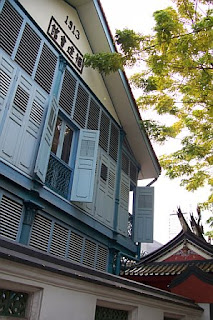

The guide shared with the tour participants about the history of the development of Chinatown, the functions of five-foot-ways and more. If any of these interests you, then do go for this walk. It is a value-for-money tour considering the amount of appreciation for Chinatown's past that you would walk away with after the tour.
For the folks who are keen to learn about the three major schools of the Chinese philosophies and about the symbolisms found in many of the traditional Chinese temples, this tour will lend some insights to these. At the Thian Hock Kheng Temple (which means "Temple of Heavenly Happiness", the guide gave a brief overview of Taoism, Confucianism and Buddhism. It was interesting for me to realise that I could find elements of Taoism, Confucianism and Buddhism all in one single temple, the Thian Hock Kheng Temple.
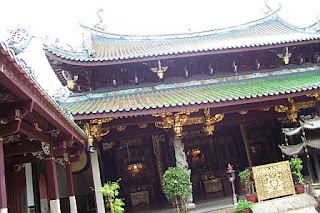

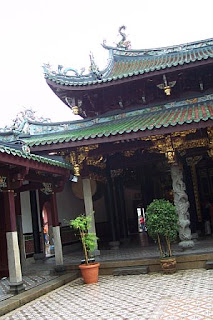
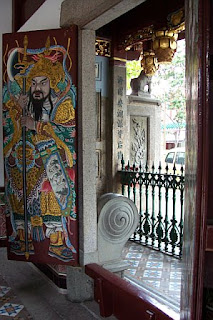
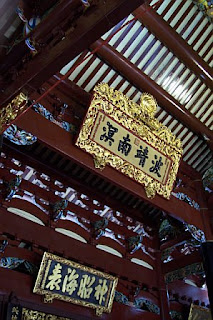
 Interestingly, there is a habitat for bats in the temple.
Interestingly, there is a habitat for bats in the temple.See if you can spot the bats from the photo above.
The next stop was Ann Siang Hill. It was quite interesting for me to see how the conserved shophouses of Amoy Street get a modern refitting with air-conditioners installed. By the way, there is a well at the foot of Ann Siang Hill, see if you can find it the next time you happen to be there.
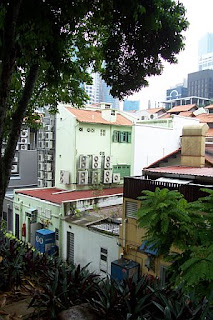
As the group proceed to Ann Siang Road and towards the Kreta Ayer area, I continued with taking photographs of the sights that I see along the way while listening to what the guide has to share.
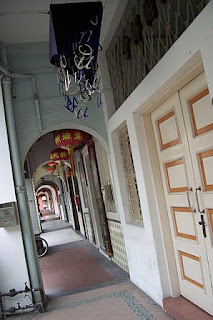
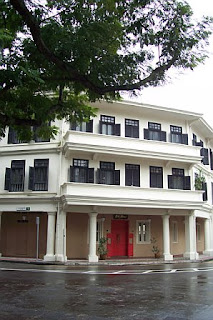


The following part of the tour is that of a visit to a Chinese medicine shop. Though we did not walk into Eu Yan Sang, the three Art Deco shophouses along South Bridge Road, we got to hear about Eu Yan Sang, the famous Chinese medicine hall which was established in 1911.
We visited the Chinese medicine shop that is just across the road from Eu Yan Sang. While I hope that there could be more shared about the key philosophies and concepts behind Chinese medicine at the Chinese medicine shop, the treat to herbal drinks made up for it.
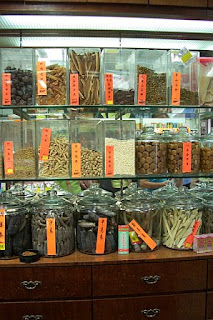
The Original Singapore Walks® indeed brings its guests to the road less travelled. After the visit to the Chinese medicine shop, we headed for a lane in Chinatown area that was once known as Singapore's "Street of the Dead". The guide shared with us about how the lane used to serve as a hospice for the terminally ill or dying Chines immigrants. There was more. Find out when you are onboard this tour.
We also travelled to a few of the shops in Chinatown area to learn about some traditional Chinese practices and customs.
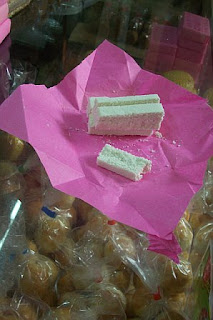
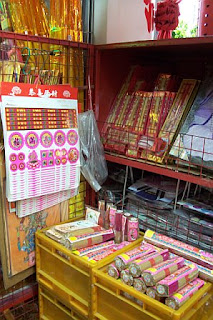
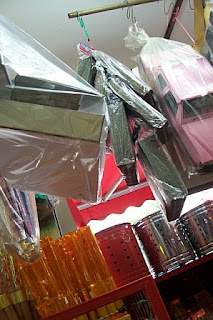
There are so much more to learn about the history of Singapore than what is found in the history textbooks. The Original Singapore Walks® not only takes its guests to the road less travelled, it brings its guests to a journey to learn more about the rich heritage of Singapore.
Perhaps the only question that I had that was not answered by the end of the tour was: Where are the red clogs? I figured that red clogs making is a vanishing trade in Singapore.
More information about the walk, Red Clogs Down the Five-Foot-Way ™, can be found here:
http://www.journeys.com.sg/singaporewalks/tours_redclogs.asp
**
References:
- Urban Redevelopment Authority, Singapore. (2001). URA Gallery City Walk: Chinatown Historic District.
- G. Byrne Bracken. (2004).A Walking Tour: Singapore. Singapore: Times Editions.
- National Heritage Board. (Oct 2006). Discover Singapore: Heritage Trails.
Recommended list of related external links to visit:
Al Abrar Mosque
Five-foot-way traders
Thian Hock Kheng Temple, posted on Yesterday.sg by username
Welcome to Thian Hock Kheng Temple
Clog makers





